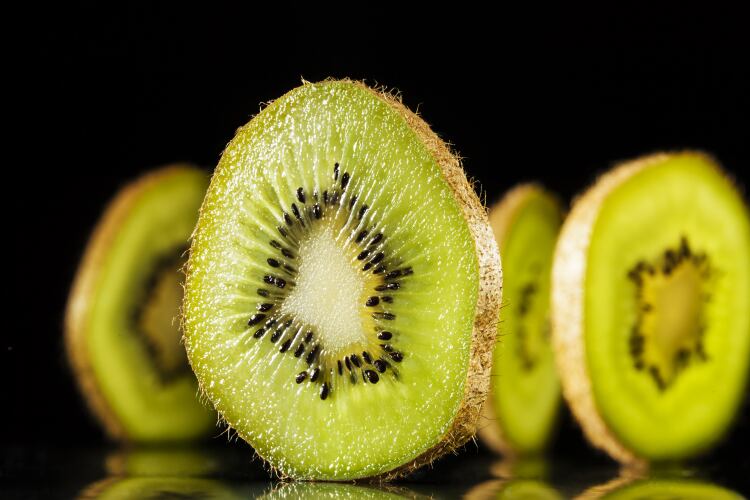Allulose was approved for use in America in 2012, when the US Food and Drug Administration permitted its inclusion in a variety of food and nutrition products. The ingredient has received regulatory backing in a number of other markets globally, including Mexico, Japan, Singapore and South Korea. In Europe, it is currently working its way through the Novel Food process, awaiting the safety green light from EFSA.
With EFSA approval ‘expected’, German researchers decided to investigate whether the novel rare sugar has characteristics that appeal to European consumers. To do so, the scientists analysed consumer preferences relating to four sweeteners: allulose, stevia, xylitol and erythritol.
“Our paper shows that allulose has potential,” first author Dr Kristin Jürkenbeck of the University of Goettingen told FoodNavigator.
What claims matter? From taste and naturalness to counting calories
According to the study, which was published in journal Nutrients, when participants of an online survey were asked to rank the importance of different characteristics when purchasing food, they said they pay most attention to naturalness, regional production, low sugar, and few additives.
When comparing the appeal of the four sweeteners, the researchers found taste was the most important attribute. “Taste is by far the most important one. It is followed by the base product and the influence on the blood glucose level. Price, dental health, and calorie content were equally important,” they concluded.
Allulose has similar functional properties as conventional sugar. It is available in crystalline powder and is easily dissolved in water. The sweetness of allulose is about 70% that of sucrose. One of its main advantages, the researchers suggested, is that it delivers a ‘typical sugar taste’.
This was a clear trend in the taste preferences consumers expressed. ‘Typical sugar taste’ came out top as the most popular flavour description, followed by ‘sweet taste’. Descriptions that pointed to an aftertaste, such as caramel or liquorice, were not favoured by consumers. “Even the wording ‘typical sugar taste with a hint of caramel’ has a negative rating,” the researchers concluded. “This clearly shows that consumers prefer a typical sugar taste or a sweet taste.”

Perceived ‘naturalness’ of the base sweetener was also flagged as an attribute that is important to European shoppers. In this context, the study found stevia is currently the ‘most preferred base product’.
“One possibility could be that the base product ‘stevia’ is also the product name with which it is sold and is therefore well-known by consumers. However, stevia has a sweet taste with a liquorice note, which in fact was not preferred by consumers. These contradicting results show that consumers might have very little knowledge about the production of sweeteners. Providing consumers with information about the production process could increase their acceptance of sweeteners from natural base products. Another explanation could be that consumers rate the base product ‘stevia plant’ as natural but do not prefer the taste of stevia,” they suggested.
However, the researchers stressed, with more information about allulose, consumers could find that the ingredient meets their expectations for perceived ‘naturalness’.
Allulose occurs naturally in fruit like figs, kiwis and raisins, but only in very small quantities. Using enzymes, the rare monosaccharide allulose can be obtained from corn starch, beet sugar or maize through enzymatic conversion. “Extracting ingredients from sugar beets for sugar production could fulfil the consumers’ desire for naturalness,” the German researchers suggested.
When asked to rate the importance of different attributes linked to allulose separately – not comparing it with other sweeteners – the researchers saw an interesting shift. “The results of the ranking task show that the attribute level of allulose of ‘no influence on blood glucose level’ was most important to respondents, followed by ‘calorie-free’,” they noted.

Allulose has a calorific value of 0.4kcal/g – just 10% of the calories of sucralose. Additionally, allulose has many health advantages in comparison to conventional sugar, including no influence on blood glucose levels (glycemic control). “Diets supplemented with allulose are suggested to prevent obesity and diabetes,” the study noted.
So what does all this mean for businesses that want to leverage allulose in their reformulation efforts in Europe? “The derivation of commercial solutions marketing and strategy recommendations must be derived here by companies themselves,” Dr Jürkenbeck told us.
“In the marketing of sweeteners, a wide variety of characteristics could be used in communication. Conceivable topics include, for example, calories, naturalness, taste, or health aspects.”
'We expect allulose to be received well by customers and consumers'
Ingredient manufacturer Tate & Lyle is bullish on the outlook for allulose in Europe, where it believes its functional characteristics will be an important addition to sugar reduction efforts.
“It can be difficult to achieve parity with sugar in terms of taste. While high sweetness levels can often be achieved using different sweetening ingredients, a truly sugar-like taste without any noticeable ‘off’ taste can be quite challenging,” Abigail Storms, Global Head of Sweeteners at Tate & Lyle, told FoodNavigator.
High intensity sweeteners provide sweetness without the other functional properties of sucralose, which can impact texture. This means formulators often need to use multiple ingredients in combination: with intense sweeteners providing sugar-like taste, while bulk sweeteners or fibres are used to build back texture. In contrast, Storms explained, allulose can provide bulk and sweetness. “Allulose provides a significant addition to the sugar replacement toolbox as it contributes an added benefit in that it behaves like sugar and can provide both bulking and sweetness in food and drink products, while reducing calories and the need for additional ingredients to be used.”
Does she believe consumers will view allulose as a ‘natural’ ingredient? Most allulose is, after all, produced on a commercial scale via a complex, multi-step enzymatic process.
Storms recognised demand for clean labels and a desire for ingredients that consumers can understand and pronounce. And she believes allulose can meet the brief.

“Allulose is a rare, virtually calorie-free sugar that exists in nature in certain fruits, such as figs and raisins. In commercial use allulose is manufactured from corn starch, but where approved it is simply labelled as ‘allulose’ in accordance with the required food labelling legislation. This is similar to the approach taken for many commonly consumed food ingredients such as sucrose (where the source of beet or cane sugar is not required to be specified), citric acid (that is made by fermentation using a molasses or corn material) and even vitamin C (ascorbic acid) which is commonly produced form glucose which itself is made from corn.
“While not referring specifically to an ‘extraction’ process, consumers are interested in non-artificial sweeteners and those that are ‘found in nature’. Allulose is naturally found in figs and raisins, and this resonates with consumers as they make their food ingredient choices,” she elaborated.
“Allulose will provide the food formulator with a sugar and calorie reduction tool that delivers a number of attributes essential for successful product formulation and reformulation. Many taste challenges, previously experienced when formulating with low and no calorie sweeteners, are overcome with allulose when it is used alone or in combination with other sweeteners… Additionally, allulose provides other sugar-like characteristics needed for a sugar-like taste performance such as body, mouthfeel, texture, browning and other sugar-related physical performance properties.
“In Europe, we expect allulose to be received well by customers and consumers, as it has in markets where it's already approved and in use.”

